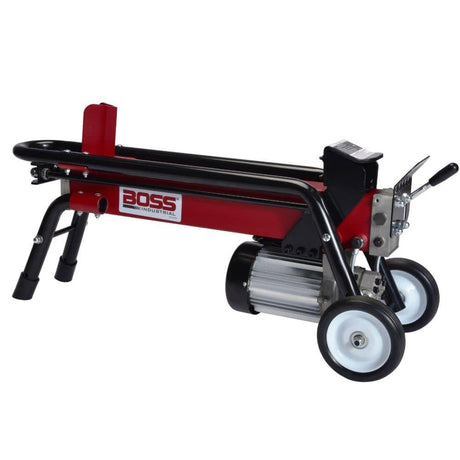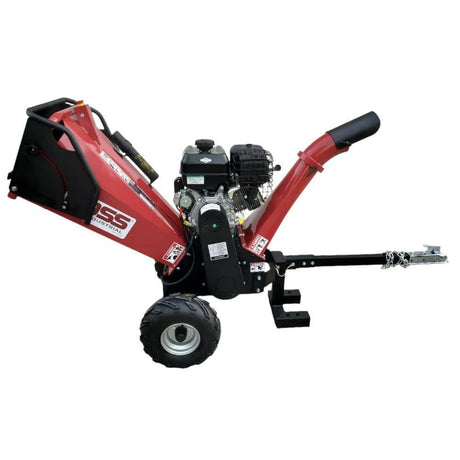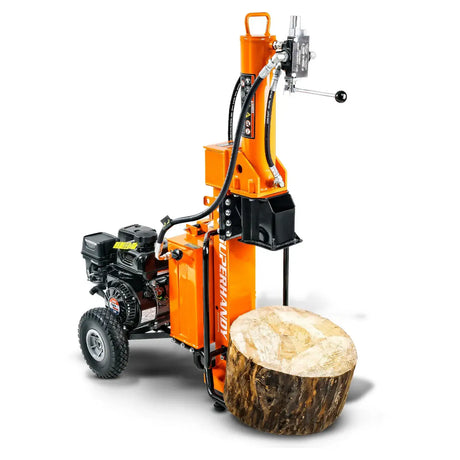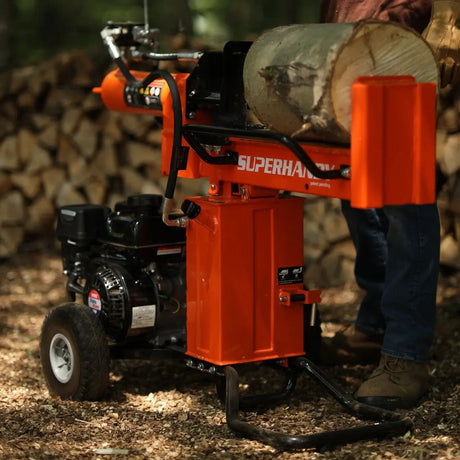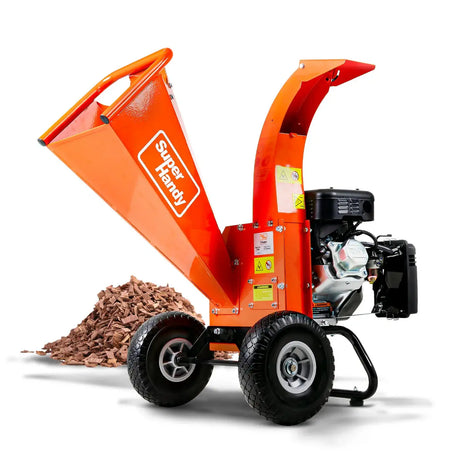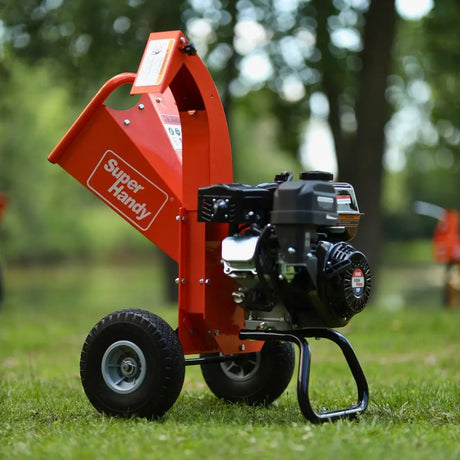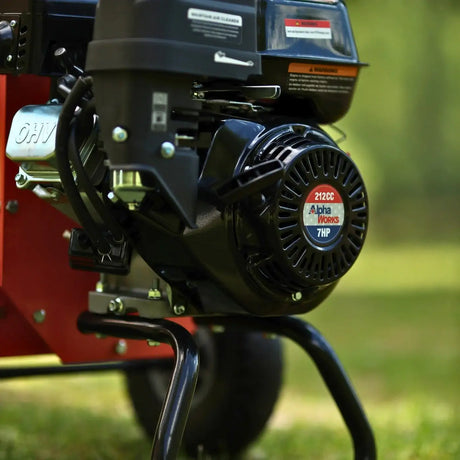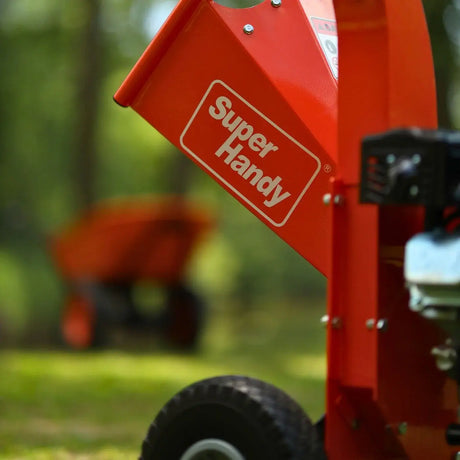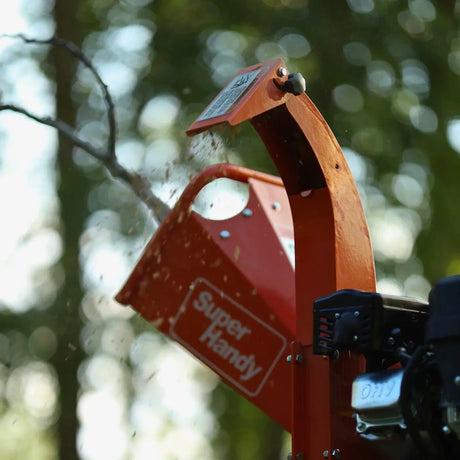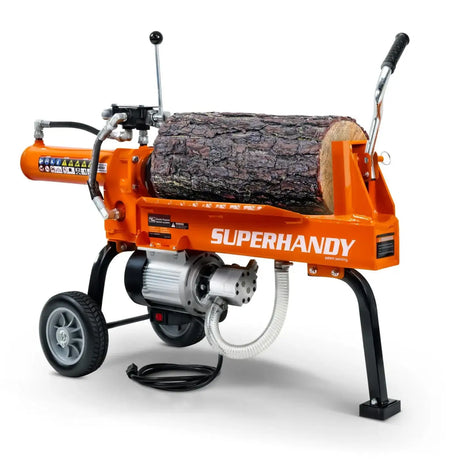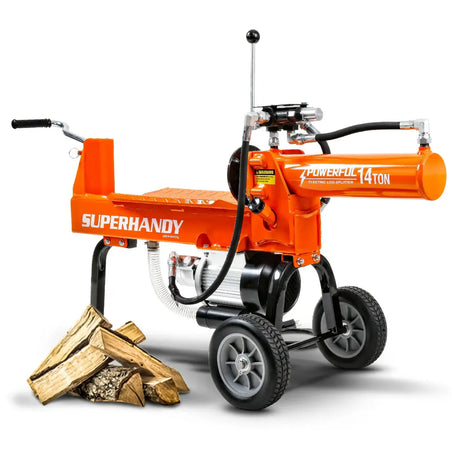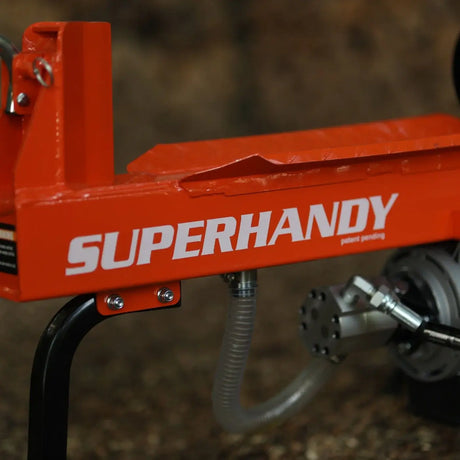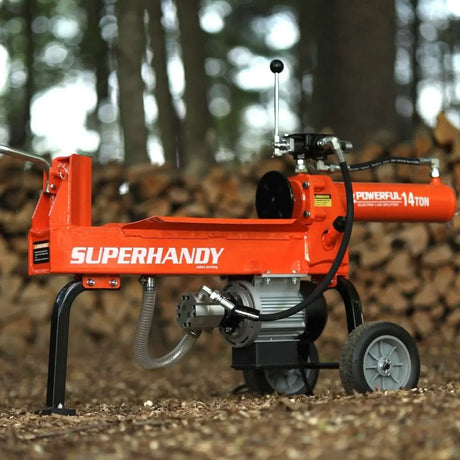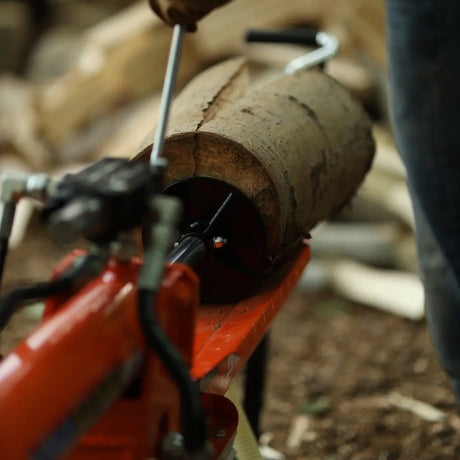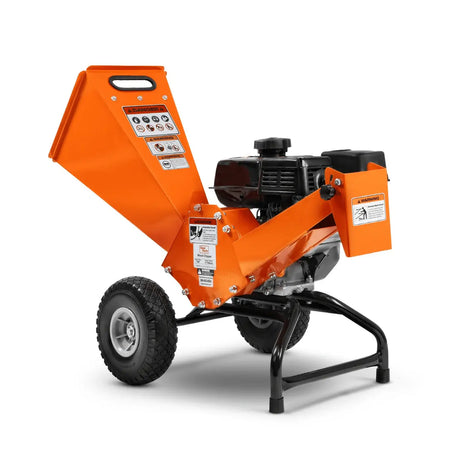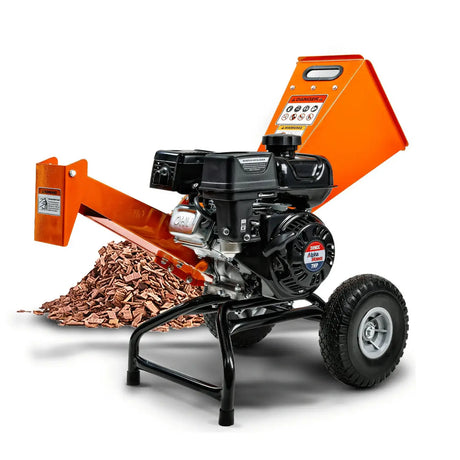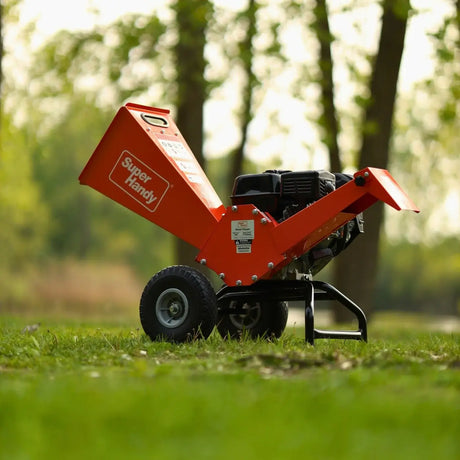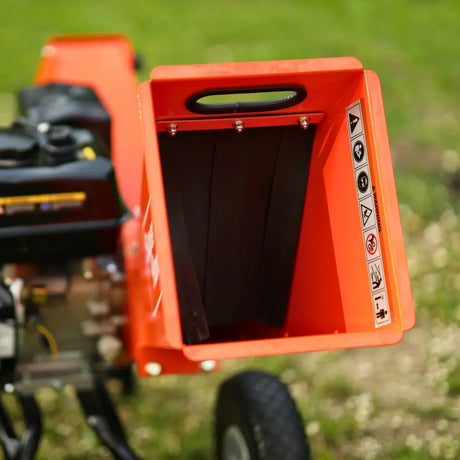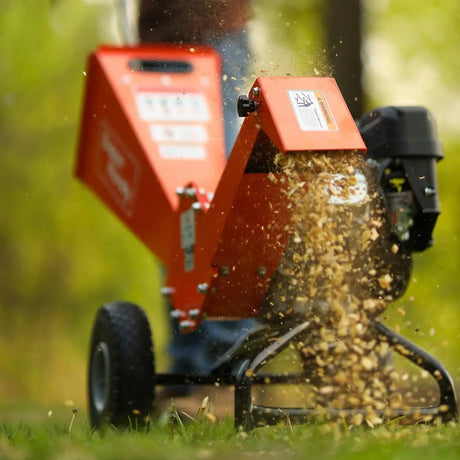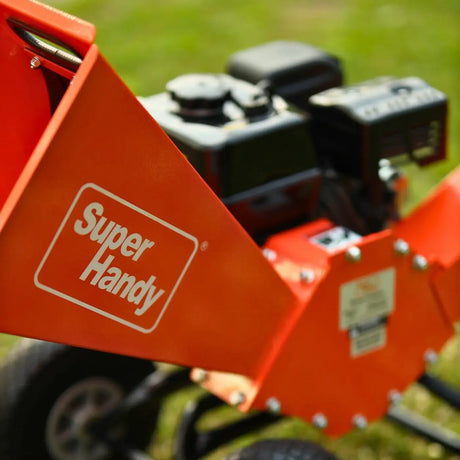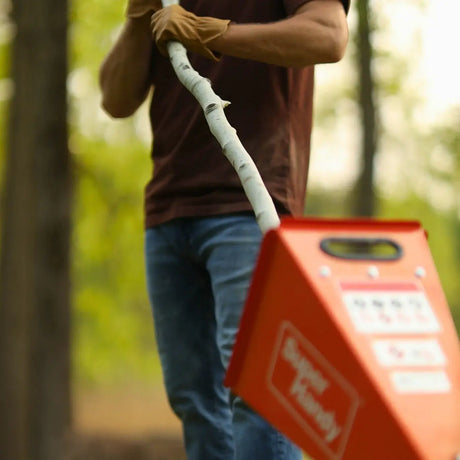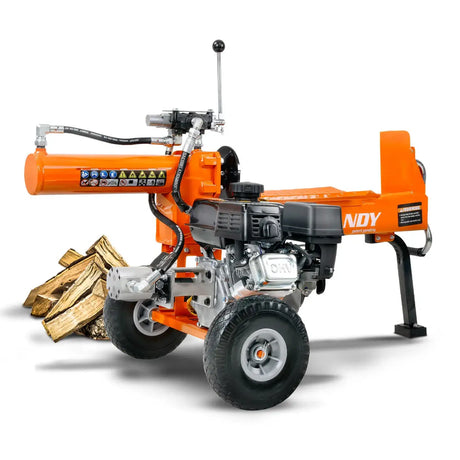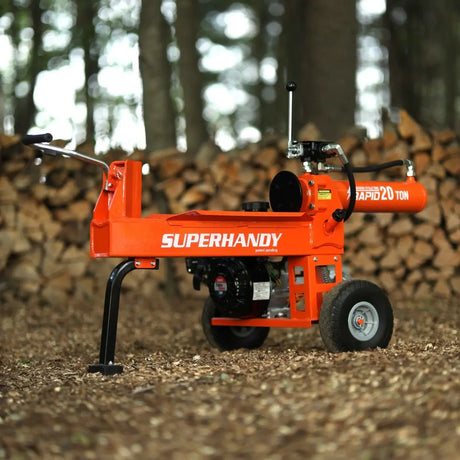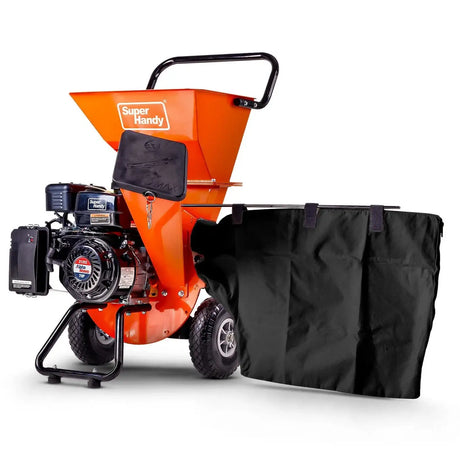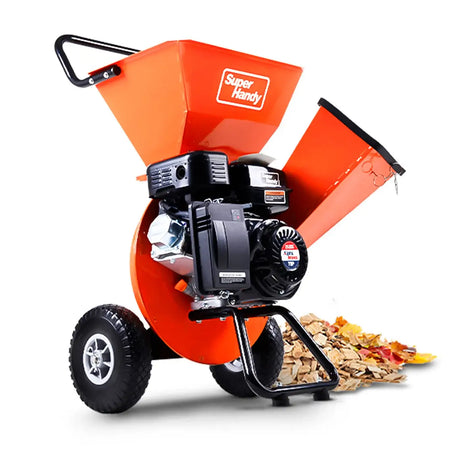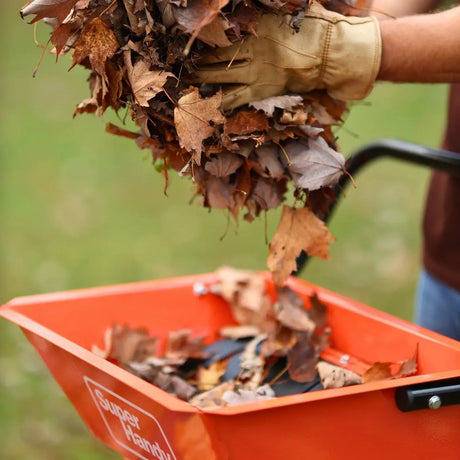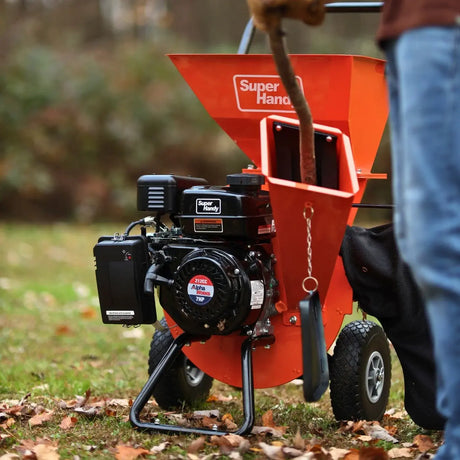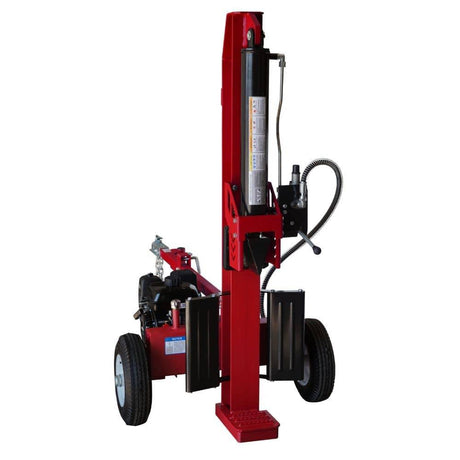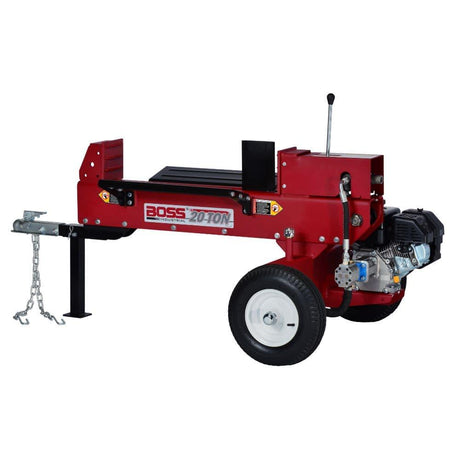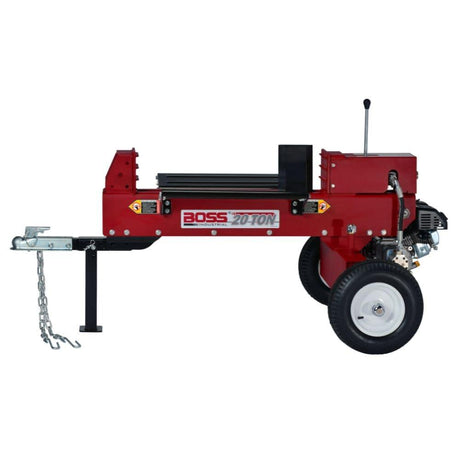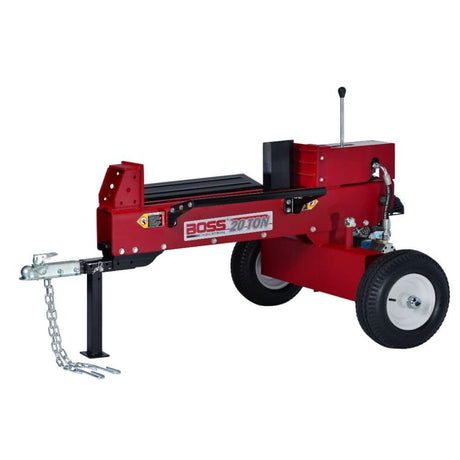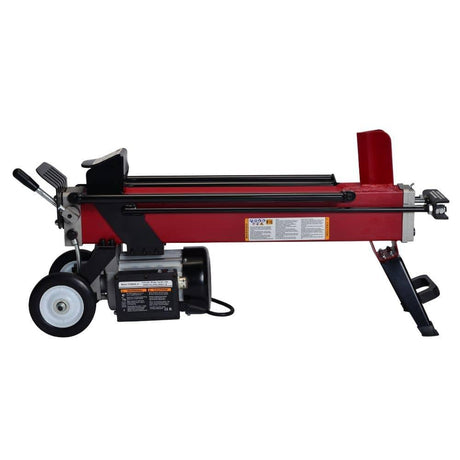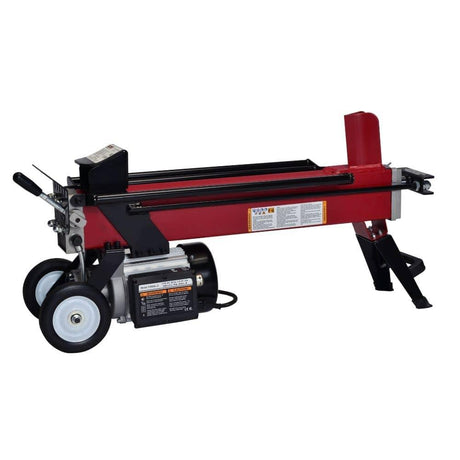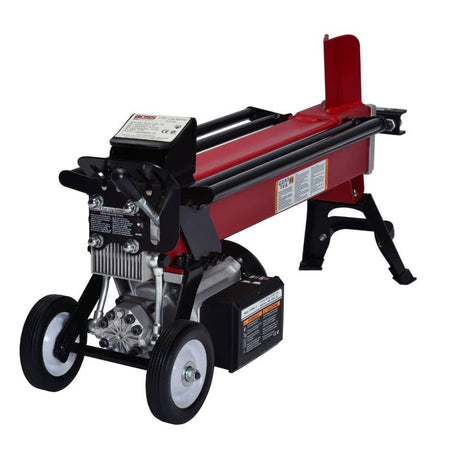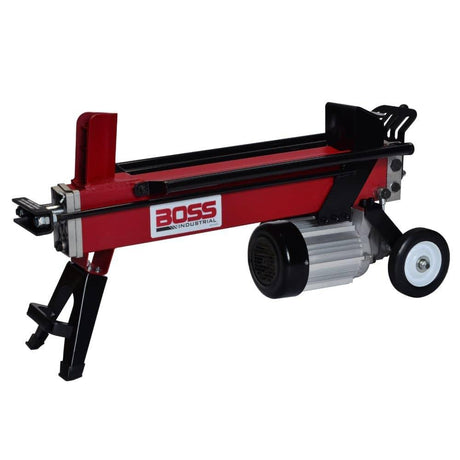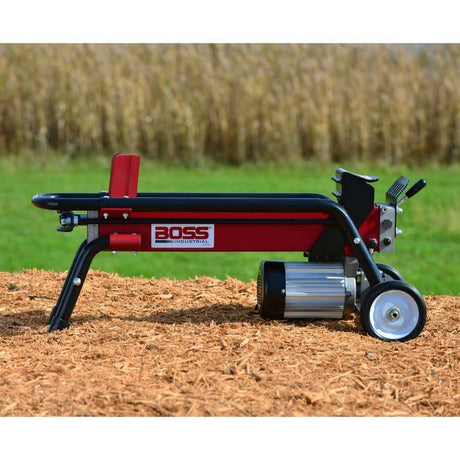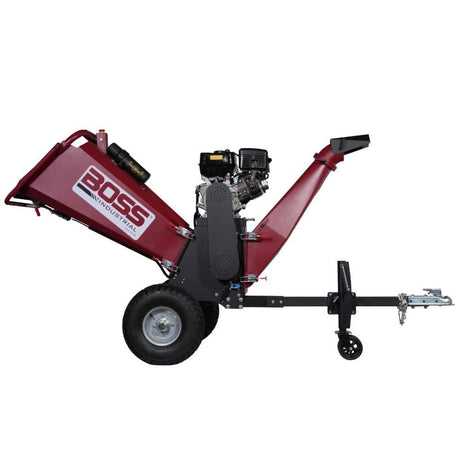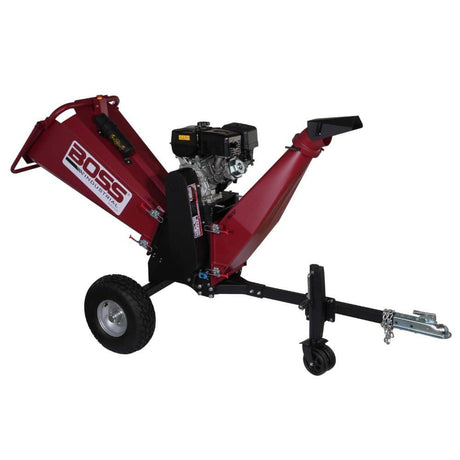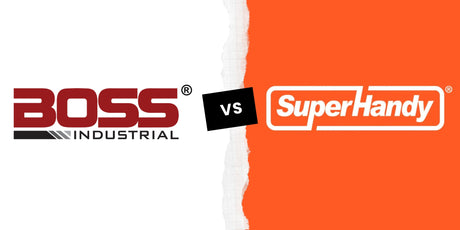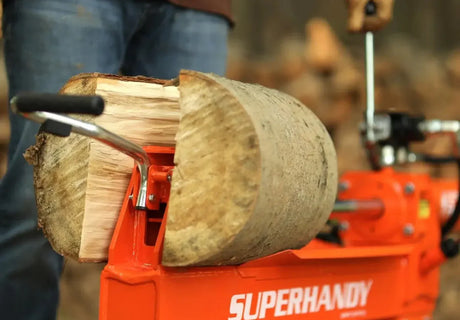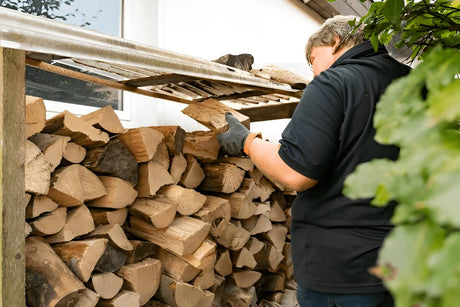What Is a Wood Chipper, Wood Shredder, and Mulcher?
Understanding these machines starts with one simple question: What are you trying to break down-big branches or soft yard debris? Each machine is designed for a different job, and using the wrong one can lead to frustration, jams, or even damage.
Let's break them down clearly and explore the wood shredder vs wood chipper debate to help you decide what fits best.
If you want to compare power options, check out our electric vs gas wood chipper comparison to see which suits your yard best.
Want a full breakdown of how to choose the right chipper and get the most out of it? Check out our complete wood chipper guide for expert advice.

What Is a Wood Chipper?
How It Works
A wood chipper is built to do one thing really well: turn thick branches into manageable chips. Inside, you'll find either a sharp disk or a rotating drum fitted with steel blades. As the wood feeds in, the blades slice it cleanly into small, uniform chunks. Think of it like a mechanical guillotine-but for tree limbs.
Some machines also use internal fans to blow the wood chips out through a chute, so you can collect or direct them where you want.
What It's Designed For
Wood chippers are designed to handle the heavy stuff:
- Tree limbs and branches, often up to 3-6 inches in diameter.
- Dry or green hardwood and softwood.
- Post-storm cleanup or pruning jobs involving tree debris.
They're not meant for leaves, vines, or thin brush. Those materials tend to get tangled up or slip past the blades without getting properly chipped.
Common Users
You'll typically see wood chippers used by:
- Homeowners with larger properties or wooded lots.
- Landscapers clearing tree debris.
- Tree care professionals doing regular maintenance or removals.
If your yard has big limbs lying around after storms or routine pruning, a chipper saves time and elbow grease-while giving you useful mulch in the process.

What Is a Wood Shredder?
Key Differences from a Chipper
While a chipper cuts, a shredder tears and smashes. Most shredders use flails, blunt hammers, or rotating tines instead of sharp blades. Instead of slicing wood cleanly, they break it apart into finer, more fibrous material.
You'll notice the output is more like mulch or compost than tidy wood chips.
Another key difference? Shredders generally handle smaller and softer material.
Ideal Use Cases
A wood shredder is a great fit if you're mostly dealing with:
- Garden clippings and soft yard waste.
- Small twigs, hedge trimmings, and pinecones.
- Leaf piles (as long as they're dry).
They're especially handy in the fall when you've got more leaves than limbs. They don't handle large branches well-but they shine when the debris is light and stringy.
Material It Can Handle
Most residential-grade shredders can tackle:
- Branches up to 1-2 inches thick in diameter.
- Dried leaves, soft vines, stalks, and grass clippings.
- Some palm fronds and green waste-if they're not too stringy or wet.
If you've ever tried to feed damp leaves into a chipper, you know how quickly it can clog up. That's where a shredder comes in handy.
For details on handling wet material, see our guide on wet wood in a wood chipper.

What Is a Mulcher?
Different Types of Mulchers
The word mulcher gets used loosely, but here's the truth: mulchers come in a few different forms. The most common types include:
- Lawn mower mulchers that chop grass clippings finely and return them to the ground.
- Stand-alone mulchers, often powered by an electric motor, made for leaves and soft waste.
- Forestry mulchers, which are heavy-duty attachments for trucks or tractors, used in land clearing.
In a backyard setting, most people use the term to refer to small, electric units built to shred leaves into mulch.
What They're Best Used For
Mulchers are designed for:
- Leaves (especially dry ones).
- Grass clippings.
- Fine garden debris.
They're perfect if you want to make your own leaf mulch or compost starter and don't need to deal with anything woody.
Limits of Mulchers
Here's where things get tricky. Mulchers:
- Can't process branches or sticks (even small ones can jam the machine).
- Tend to have smaller motors and weaker cutting power.
- Are typically electric and not ideal for large yards or heavy loads.
Think of a mulcher as the finishing tool. It's not built for raw power-but it's great for turning soft material into something useful for your soil.
Main Differences: Wood Shredder vs Wood Chipper vs Mulcher
When people ask, "Which one do I need?", this is the section that really matters. It's not just about what these machines are - it's about how they behave when you put them to work. Let's dig into the key differences that actually affect your day-to-day use.
How They Process Material
Blade Systems: Knives, Hammers, and Flails
Each machine has its own way of breaking material down:
- Wood chippers use sharp knives or blades mounted on a spinning disk or drum. The chipping mechanism is built for force and precision - it slices through thick limbs like a chef's knife through a carrot.
- Shredders rely on hammers, flails, or blunt blades. Instead of slicing, they smash and tear. Great for softer, fibrous material but less effective on thick branches.
- Mulchers often use small internal blades or plastic impellers, especially in electric models. These aren't made for wood-they're meant to pulverize dry leaves and light yard waste into fine mulch.
Real talk? If you try feeding a 2-inch limb into a mulcher or a shredder, you'll either jam the machine or ruin the motor.
Type of Waste Processed
Here's a quick breakdown of what each one handles best:
- Wood chipper: Thick branches, tree limbs, woody brush
- Shredder: Twigs, hedge trimmings, dry stalks
- Mulcher: Leaves, grass clippings, light garden debris
If your cleanup pile is full of mixed debris, you might even need more than one machine - or a hybrid that combines chipping and shredding.
Output Size and Texture
This matters more than people realize. What comes out of the machine determines what you can do with it.
- Chippers produce chunky, uniform wood chips, perfect for walkways or ground cover.
- Shredders leave you with fibrous, uneven mulch that breaks down faster in compost.
- Mulchers create fine, fluffy mulch, ideal for topdressing garden beds.
If you're trying to mulch a vegetable bed, a chipper's output will be too coarse. But for landscaping around trees, chipper-grade wood chips are spot on.

What Each Machine Can Handle
Chipper capacity and Material diameter
This is where chippers shine. On average:
- Chippers can handle 3-7+ inch branches (or more with a commercial model). That's a significant material diameter capacity, especially for storm cleanup or heavy-duty yard work.
- Shredders are built for 1-2 inch twigs at most.
- Mulchers aren't meant for branches at all. Even small sticks can jam them.
Before you buy, always check the input size rating. And remember: wet, freshly cut wood is harder to chip than dry, seasoned limbs.
Best Materials for Each Tool
Use the right machine for the right material:
| 🧰 Task | 🪓 Wood Chipper | 🌀 Wood Shredder | 🍂 Mulcher |
|---|---|---|---|
| ✅ Best For |
|
|
|
Trying to force the wrong material through the wrong machine is the fastest way to burn out the motor-or worse, hurt yourself.
Limitations and Warnings
Each machine has its weak spots:
Chippers don't like:
- Wet leaves or vines (they clog the chute)
- Long, stringy material (it wraps around chipper blades)
To avoid jams, learn what not to feed in our article 5 Things You Should Never Put in a Wood Chipper.
Shredders can:
- Jam easily if overfed
- Struggle with green, sappy wood
Mulchers can:
- Overheat quickly
- Snap blades on contact with sticks, stones, or acorns
One client of mine once fed a damp rake-full of leaves into a chipper. It jammed in seconds and took half an hour to clean out. Know your machine's limits-and don't push them.

Power Sources and Performance
Electric vs Gas Chipper Comparison
This choice comes down to your workload and yard size.
Electric models:
- Quieter, lighter, and easier to maintain
- Limited to small-scale jobs and close to an outlet
Gas-powered machines:
- Stronger and built for heavier material
- No cord = more mobility
- Require more maintenance (oil, fuel, spark plugs)
Gas models typically rely on an internal combustion engine, giving them more torque to handle larger limbs and higher chipper capacity.
If you're clearing tree limbs after a storm, go gas. If you're just cleaning up some fall leaves, electric may be all you need.
Portability and Ease of Use
Electric models are light and easy to move around-perfect for suburban yards.
Gas models are heavier but often have wheels and tow hooks.
Forestry mulchers or large chippers may require trailers or trucks.
Before you buy, think about your terrain. Hilly or wooded lots demand different portability than a flat, fenced backyard. For example, if you need access to overgrown corners or wooded acreage, wheel and tow designs make a difference.
Noise and Emissions
Let's be honest: chippers are loud. Especially the gas-powered ones.
- Chippers and shredders (gas) can exceed 100 dB-definitely ear protection territory.
- Electric mulchers and shredders are quieter but still not silent.
- Gas models also emit fumes and require outdoor use.
Choose wisely-your neighbors (and your ears) will thank you.
Safety Considerations
Injury Risks by Machine Type
All three machines can be dangerous if misused, but here's the hierarchy of risk:
- Wood chippers are the most dangerous-especially commercial-grade models using aggressive feed mechanisms.
- Shredders can kick debris back or snag loose clothing.
- Mulchers are generally safer but can still jam or overheat if misused.
Never let kids or pets near a running machine, and never reach in to clear a jam with the power still connected.
Protective Equipment Required
At a minimum, always wear:
- Safety glasses or a face shield
- Heavy-duty gloves
- Ear protection (especially for gas models)
- Closed-toe shoes or boots
Loose clothing, jewelry, or long hair? Tie it back or leave it inside. You don't want it getting pulled into rotating cutting blades.
Safety Tips for First-Time Users
- Read the manual. It sounds obvious, but too many people skip it.
- Start small. Don't feed the thickest limb first-learn the feel of the machine.
- Keep hands clear. Use a push stick if necessary, especially with shredders and mulchers.
- Shut it off before unclogging. Every time. No exceptions.
When in doubt, go slow. A careful operator is a safe one-and your machine will last longer too.
Before using any chipper, shredder, or mulcher, read our essential wood chipper safety tips to prevent injuries and protect your equipment.

Which Machine Is Right for You?
Let's face it - not every yard (or job) needs a commercial-grade tree chipper. And not every tool can handle everything. The right choice depends on what you're clearing, how often, and how much power you really need.
Best Option for Homeowners
Leaf Cleanup and Small Branches
If your main concern is the fall leaf pile, some weekend pruning, and occasional twig cleanup, you don't need to overbuy. A shredder or mulcher is typically enough.
Here's what you should look for:
- A model that can easily handle dry leaves and yard trimmings without clogging.
- Light-duty ability to chip branches up to 1.5-2 inches.
- Electric power if you're close to an outlet and want to avoid fuel maintenance.
A mulcher is perfect for leaf piles. And if you've got a few smaller branches to deal with from trimming shrubs or fruit trees, a shredder covers that too.
Shop Wood Chippers for Homeowners →
Budget-Friendly Picks
If you're on a tight budget or just want something simple for routine cleanup:
- Go electric - less maintenance and more affordable.
- Choose machines with clearly marked chipper capacity limits to avoid motor stress.
- Skip anything oversized. For suburban yards, compact footprint and maneuverability matter more than raw horsepower.
Remember, you don't need a 6-inch chipper for a few maple limbs and some hedge clippings. Keep it proportional to your needs.
Best Option for Acreage or Large Yards
Seasonal Maintenance Needs
Own a few acres? Deal with regular storms, deadfall, or heavy pruning? This is where a small chipper starts to pay off.
When you're dealing with:
- Tree limbs piling up every spring and fall
- Overgrown areas you want to reclaim
- The need to create your own mulch or compost
…you'll want a gas-powered chipper or combo unit that can handle both limbs and brush.
It's not about power for power's sake - it's about saving time. Dragging branches to the curb or burning them (where allowed) takes hours. A chipper gives you a cleaner, reusable solution.
Combo Units to Consider
A chipper/shredder combo can be a smart investment for larger properties. You'll get:
- A chipping chute for larger limbs
- A separate shredder hopper for twigs and leaves
One machine, multiple uses. Just make sure it's built solid - combo units can struggle if they're underpowered. Some modern models come with self sharpening blades, which reduce maintenance and improve performance over time.
Best Option for Professionals
Heavy-Duty Cleanup Jobs
If you're in the landscaping or tree service business, you already know: time is money. You need equipment that can keep up.
A professional-grade chipper is built for:
- Daily use in tough conditions
- Limbs up to 6-8 inches in material diameter
- Faster feed rates and bigger engines
Whether you're clearing downed trees after a storm or doing full yard removals, a light-duty chipper just won't cut it - literally or figuratively.
Commercial-Grade Machine Features
When stepping up to pro-level gear, look for:
- Tow-behind or trailer-mounted options for mobility
- Self-feeding or hydraulic feed mechanisms
- Easily replaceable self sharpening blades and heavy-duty build quality
It's also worth investing in machines with better discharge control - you want to direct wood chips into a trailer, truck bed, or specific pile for efficiency.
Are Chipper/Shredder Combos Worth It?
Pros and Cons of Hybrid Machines
These combo machines promise flexibility - and for many, they deliver. But they're not perfect.
Pros:
- Handles both branches and yard waste
- Saves space compared to owning two machines
- Generally more affordable than buying separately
Cons:
- May not be as powerful or fast as dedicated chippers
- Narrower intake or less robust build
- Some can struggle with thick hardwood branches or large pieces
What You Gain vs. What You Sacrifice
Here's the tradeoff:
- You gain versatility for varied yard debris and seasonal cleanup.
- You sacrifice some performance and efficiency on the chipping end.
In real life? If you've got a well-kept yard and just want one tool to handle spring trimmings and fall leaves, a combo is a great solution. But if your property constantly throws heavy wood your way, a dedicated chipper is the safer bet.
Comparison Table: Chipper vs Shredder vs Mulcher
If you're the kind of person who wants to see everything side-by-side before making a decision, this is the section for you. Whether you're weighing power, price, or purpose, here's how wood chippers, shredders, and mulchers stack up.
Quick-Glance Feature Comparison
| 🧪 Feature | 🪓 Wood Chipper | 🌀 Wood Shredder | 🍂 Mulcher |
|---|---|---|---|
| 📏 Size Capacity | Handles branches from 2 to 6+ inches thick depending on the model. Ideal for heavy-duty limb reduction and chipping material efficiently. | Typically processes 1 to 2 inch twigs and lighter brush. Not suitable for solid branches or high-diameter material. | Designed for leaves, grass, and soft debris only. Can't handle sticks or woody material. |
| 📤 Output Type | Produces chunky wood chips, great for paths, ground cover, mulch, or compost bases. | Creates fibrous, uneven mulch, better for composting or garden beds. | Turns dry material into fine, fluffy mulch. Perfect for topping flower beds or garden rows. |
| 🧰 Maintenance Needs | Requires regular blade sharpening, chipper blades inspection, engine checks (for gas models), and jam clearing. Many models now include self-sharpening blades for longer use. | Needs occasional hammer or flail inspection, cleaning after use, and some belt or blade attention. | Low-maintenance overall. Keep it clean, clear blockages, and check for dull or damaged cutting blades. |
| 💸 Cost Range | Prices vary widely — from $400 to $3,000+ depending on power, chipper capacity, and brand. Gas models (especially tree chippers) cost more, especially commercial-grade units. | Mid-range — expect to spend $150 to $800 for residential models. | Most budget-friendly option — typically $80 to $300 for electric motor units geared toward leaves and grass. |
Pros and Cons of Each Type
Let's make it even clearer. Here's what each machine does well - and where it falls short.
| 🔍 Feature | 🪓 Wood Chipper | 🌀 Wood Shredder | 🍂 Mulcher |
|---|---|---|---|
| ✅ Pros | Handles large pieces like big branches and tree limbs Produces clean, uniform wood chips Great for storm cleanup and wooded properties |
More versatile for mixed garden waste Easier to use and maintain than a full chipper Good for creating compost-friendly mulch |
Perfect for handling big piles of dry leaves Lightweight and simple to operate Very affordable for most homeowners |
| ⚠️ Cons | Higher upfront cost Needs more maintenance and safety precautions Not ideal for small debris like leaves or vines |
Limited to small branches and dry material Can jam with wet or stringy debris Slower process for heavy piles |
Not designed for sticks or anything woody Small intake size (hopper) Limited lifespan if overworked |
| 🎯 Good Fit If | You regularly deal with big limbs or want serious power for property cleanup. This is where the original chipper design shines – slicing through wood with engineered precision. |
You've got mixed yard waste – not huge limbs, but too much for a rake and bag. | You want to turn fall leaves into mulch or compost without spending much. Also ideal if you want to efficiently reduce light material into ground nutrients. |


